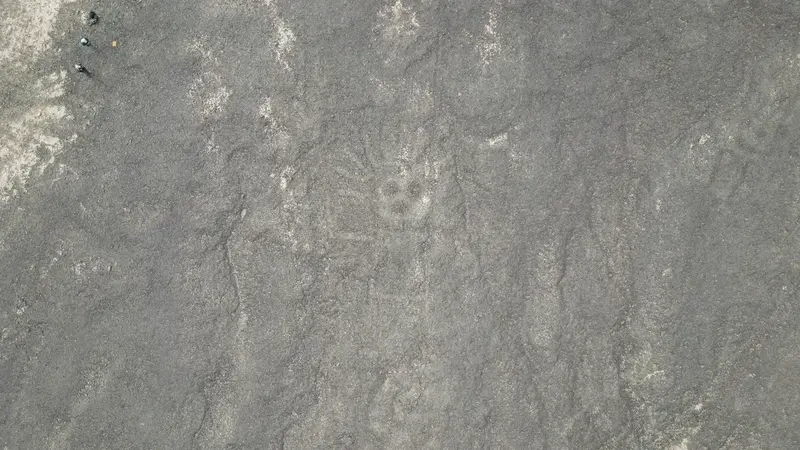A team of Japanese, French, and American scientists, with the help of a system artificial intelligence I found 303 amazing geoglyphs on the Nazca Plateau. Some of them stand out for their gigantic sizes and eerie themes. Among the most striking are the images of severed human heads and a huge whale with a knife.
Geoglyphs are geometric or figurative patterns drawn on the ground that are at least four meters long. Among them, there are some so large that they can only be fully seen from the air.
A few words about the mysterious plateau.
Researchers discovered the geoglyphs on the Nazca Plateau as early as the 1940s. Since then, they have been considered some of the most iconic tourist attractions in South America. The oldest images are dated to 100 BC.
Numerous archaeologists Historians and anthropologists who have studied these drawings have yet to reach a consensus on the purpose of these colossal ancient works of art.
Until the current discovery, scientists had identified 430 geoglyphs, mostly depicting people and animals. About fifty of them belonged to the category of the largest linear drawings, created by removing soil. The remaining 380 were classified by researchers as small, relief images: these were made in the opposite way, by laying stones on the ground. Due to the small size of the images in the second group, it was more difficult to detect them. Moreover, some of the stones had weathered away over the centuries.
Scientists suspected that not all geoglyphs had been found. Detecting them using traditional methods archaeology – the process is laborious and lengthy.

What researchers have learned
To expedite this process, the authors of the new study developed a program. AI that is capable of identifying faded geoglyphs hidden in aerial photographs of the plateau. The algorithm proved to be particularly adept at detecting faint traces of relief geoglyphs. It helped researchers discover over 300 unknown works of ancient art, the publication reported. IFLScience .
As the team wrote in the report article, “the main motifs of the relief geoglyphs (mostly 9 meters long) were humans, livestock, and human sacrifices.” Meanwhile, 64 percent of the linear geoglyphs depicted wild animals. These large figures often stretched up to 90 meters.
In attempting to interpret the giant ancient drawings, the authors of the study noticed that the linear motifs are predominantly located about 34 meters from the pilgrimage route leading to the pre-Hispanic temple of Kahuachi. The researchers suspected that the indigenous people used the enormous geoglyphs as ceremonial sites where rituals could be conducted during the sacred journey.
Conversely, the relief geoglyphs were usually located within visible informal walking paths. Therefore, researchers suggested that these small works of art were intended for the exchange of information between individuals or communities.
However, the question of what role the image of the killer whale played remains open for discussion.
The results of the study were published in the journal Proceedings of the National Academy of Sciences.
